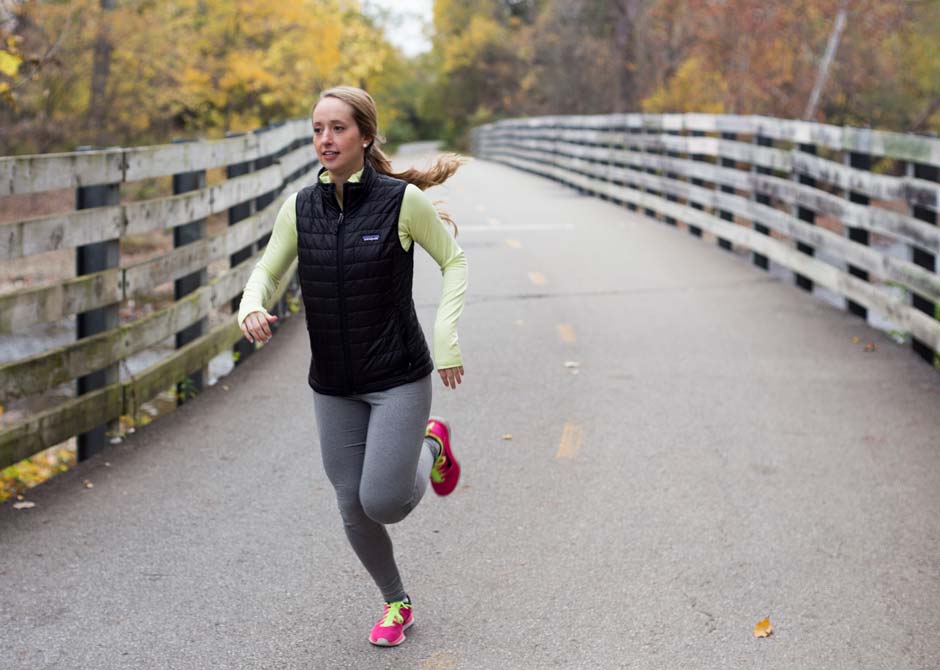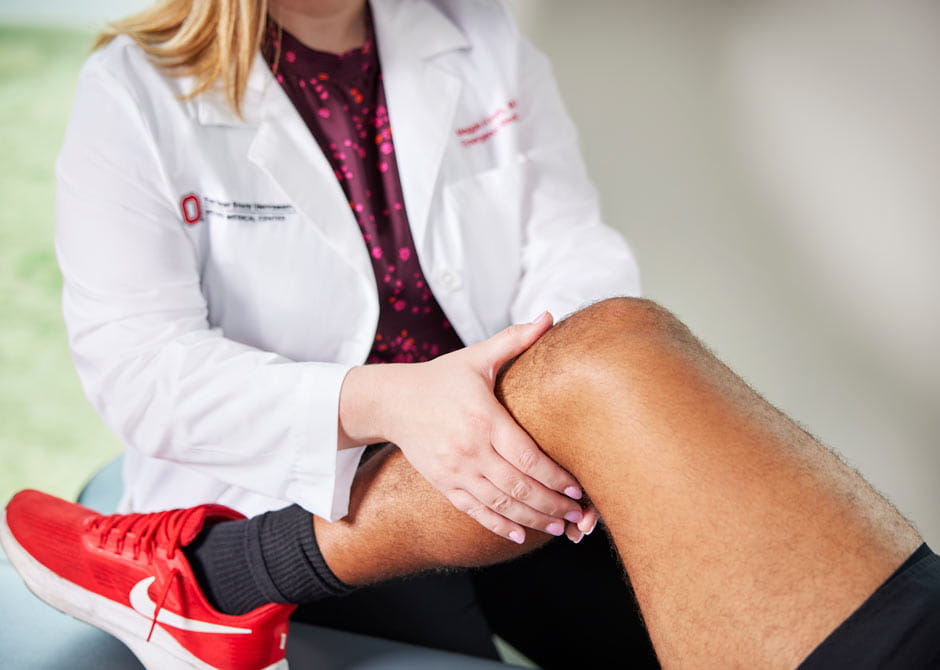
Knee Surgery and Preservation
We will work with you to determine the best treatment for your knee concerns, including ways to manage pain and restore function.
 Exceptional knee care at Ohio State
Exceptional knee care at Ohio StateMost people will experience knee pain at some point in their lives, whether related to sports or not. That doesn’t mean you have to live with it and stop enjoying your favorite activities.
Though knee pain is a common complaint we see from people of all ages, the knee experts at The Ohio State University Wexner Medical Center in Columbus, Ohio, understand the impact knee pain can have on your daily living and the importance of identifying the cause of your symptoms quickly.
Our goal is to provide leading-edge care so you can maintain your active lifestyle. That starts with leveraging the latest research in physical therapy, orthobiologics and other nonsurgical treatments to alleviate your knee pain. If your injury is more complex, our orthopedic and sports medicine experts specialize in innovative services that prioritize knee restoration and preservation, when possible, over joint replacement.
Whether you need physical therapy to be able to walk the dog again or you’re an elite athlete with a torn ligament, you’ll be in good hands with the knee experts at the Ohio State Wexner Medical Center.
David Flanigan, MD, orthopedic surgeon, explains how to find the best surgeon or hospital for your knee repair. At Ohio State, we’re experts in the field of knee repair and have been involved in multiple different clinical trials to bring you the latest treatments.
Knee pain occurs for many reasons. Sometimes knee pain starts because of an injury, such as a ruptured ligament or damaged cartilage. Certain medical conditions, such as arthritis, gout or infections, also can cause your knee to hurt and have limited function.
Whether the pain is caused by overuse from athletics or certain careers, or from a trauma such as a car accident or a sudden blow during a football game, you’ll want to see the knee experts at the Ohio State Wexner Medical Center when that pain begins to impact your daily living or that pain persists longer than a few weeks.
While we can help diagnose and treat any source of knee pain, the most common knee conditions we treat include:
 Knee preservation and treatment of knee pain
Knee preservation and treatment of knee painWhen we’re considering treatment options for a knee injury, we first consider how much the problem impacts your quality of life. There are a variety of nonsurgical treatment options that can be good alternatives to surgery in many cases.
Some of the nonsurgical treatments we might recommend include:
In most cases, our experts will recommend exhausting these treatment options before deciding on surgery. If you’re a candidate for surgery, we have numerous techniques that can preserve the knee, meaning we aim to repair or restore tissue and knee function without the need for a knee replacement. We’re true experts in working toward saving your knee.
However, if you do need a knee replacement, we’re also home to surgeons who’ve dedicated their professional lives to honing their skills in joint replacement surgery and innovating new and better ways to perform it.

We will work with you to determine the best treatment for your knee concerns, including ways to manage pain and restore function.

Rehabilitation services to improve your physical performance, recover from an injury and stay active for a lifetime.
The knee experts at the Ohio State Wexner Medical Center are national leaders in diagnosing and treating knee conditions, often initiating clinical trials to study the latest orthopedic advances and speaking across the country on best practices.
Our care for people with knee pain, especially athletes of all levels, is unparalleled in the region. Reasons to choose Ohio State for your knee care include:
Trusted by athletes: Our knee experts serve as team physicians for Ohio State Athletics as well as professional and Olympic athletes across the nation. Whether you’re an athlete or not, we make this elite level of care accessible to everyone.
Emphasis on preservation: While joint replacement is the appropriate treatment for some, we recognize that many more people might be candidates for more conservative or less-invasive treatments. We have various surgical techniques available that can prevent or delay the need for a knee replacement.
Surgical expertise: Because of a focus on restoration, we offer a full spectrum of treatment options that you won’t find in many other hospitals. These include our cartilage restoration procedures, offloading osteotomy procedures, the MISHA Knee System and the capabilities to repair complex meniscus tears.
Expert, collaborative care: We offer fellowship-level physician care and physical therapy. Our providers have completed up to two additional years of intense, specialized experiential education in the field, resulting in extensive proficiency in patient care. As part of an academic medical center, we work alongside experts in various fields, so no matter your orthopedic or sports medicine needs, you’ll receive the best care.
Parker is a high school athlete who plays football and basketball. After several traumatic injuries to his knee and a failed surgery at another hospital, his mom discovered David Flanigan, MD, an orthopedic surgeon at The Ohio State University Wexner Medical Center. Here, Parker and his mom tell his story and how MPFL reconstruction and tibial tubercle osteotomy surgery at Ohio State has put Parker back onto the field doing what he loves most: playing football.
Get an instant estimate for your out-of-pocket costs. Learn more.
As a MyChart user, you can pre-populate an estimate with your existing insurance information, receive personalized estimates and save your estimates for later.
Don't have a MyChart account? Create an account